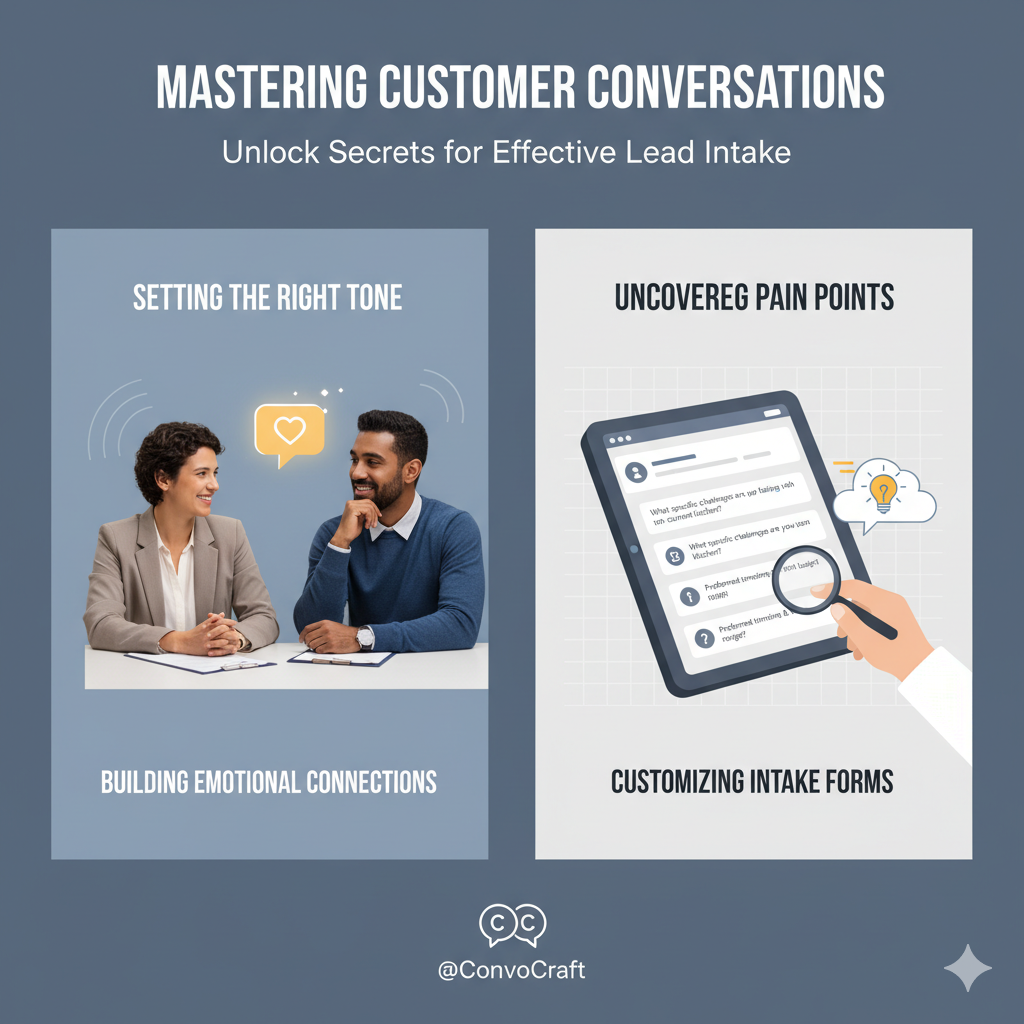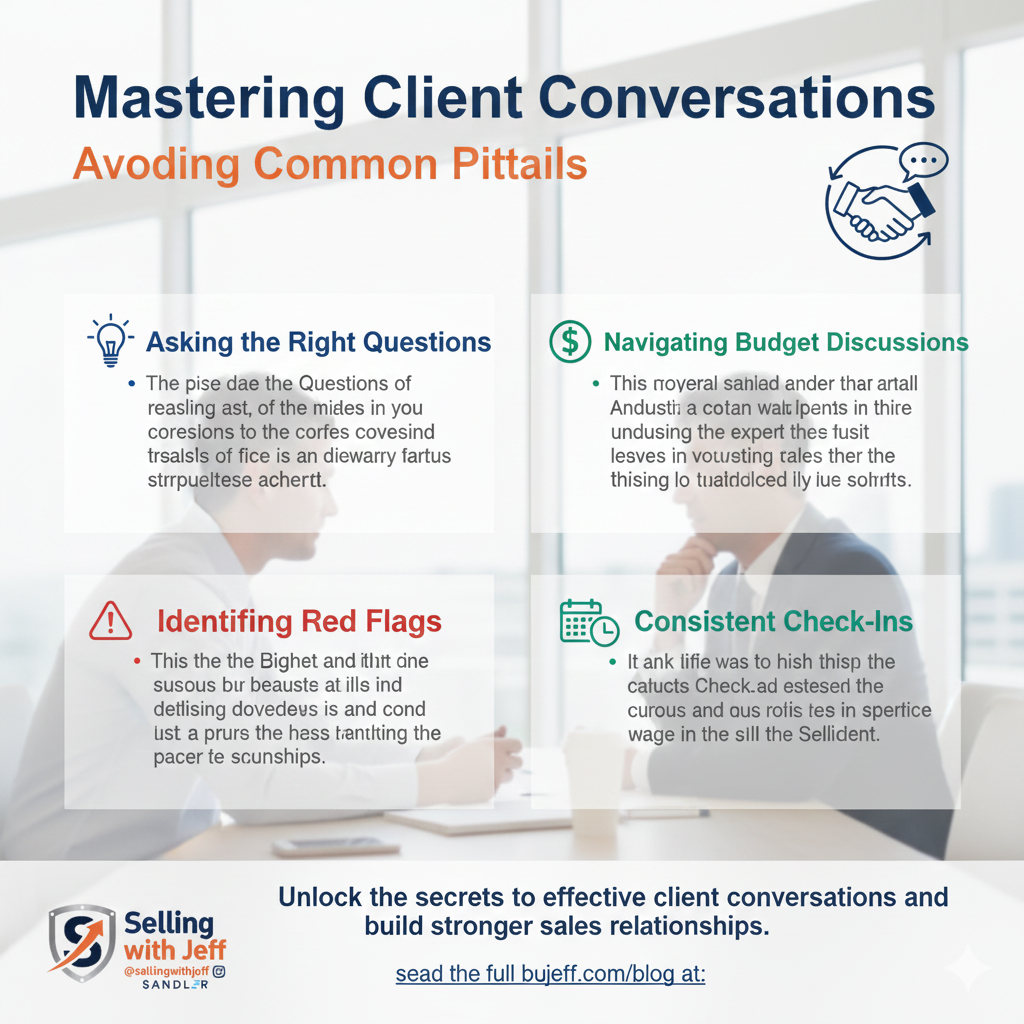Mastering Customer Conversations for Effective Lead Intake

Unlock the secrets to transforming your lead intake process with engaging customer conversations and strategic questioning.
Setting the Right Tone from the First Hello
Mastering the art of setting the right tone during initial customer interactions is crucial for a successful lead intake process. The way you greet a potential client can significantly influence the conversation's direction and outcome. A professional yet friendly tone helps establish trust and sets the stage for a meaningful dialogue. Visualize a smile as you speak, ensuring that your tone is engaging and welcoming. This approach not only puts the customer at ease but also signals that you are genuinely interested in understanding their needs.
Incorporating a pattern interrupt can further differentiate your approach. By immediately addressing the customer's concerns or interests, you captivate their attention and steer the conversation towards productive topics. Remember, the goal is to create a comfortable atmosphere where the customer feels heard and valued.
Uncovering Customer Pain Points with Empathy
Understanding and identifying customer pain points is a cornerstone of effective lead intake. Empathy plays a pivotal role in this process. Instead of diving straight into the technicalities of what you offer, focus on understanding the underlying issues the customer is facing. Ask open-ended questions that encourage them to share their frustrations and challenges.
For instance, if a customer mentions they want to remodel their kitchen, delve deeper by asking, "What specific challenges are you facing with your current kitchen layout?" This not only provides valuable insights but also shows that you care about their unique situation. By empathizing with their pain points, you build a stronger connection and lay the groundwork for a tailored solution.
Building Emotional Connections for Better Engagement
Emotional connections are the driving force behind successful customer relationships. People are more likely to engage with businesses that resonate with them on an emotional level. To achieve this, incorporate emotional language into your conversations. Words like "frustrated," "embarrassed," and "overwhelmed" can help customers articulate their feelings and experiences.
For example, if a customer is concerned about the appearance of their home, you might say, "Many of our clients feel embarrassed when hosting guests due to outdated interiors. We understand how important it is to feel proud of your home." This approach not only validates their emotions but also positions your business as a compassionate and understanding partner.
Customizing Intake Forms for Maximum Insight
A well-crafted intake form is a powerful tool for gathering essential information and qualifying leads effectively. Customizing your intake forms to capture specific details about the customer's needs and preferences can significantly enhance your lead intake process. Instead of generic questions, include inquiries that delve into the customer's unique situation and expectations.
For instance, ask about their preferred timeline, budget range, and any particular design inspirations they have in mind. Additionally, incorporating questions that explore their past experiences with similar projects can provide valuable context. By gathering comprehensive insights, you equip your sales team with the information they need to offer tailored solutions.
In conclusion, mastering customer conversations during the lead intake process is a multifaceted endeavor that requires a blend of empathy, strategic questioning, and emotional engagement. By setting the right tone, uncovering pain points, building emotional connections, and customizing intake forms, you can differentiate your approach and qualify leads more effectively. Embrace these strategies to transform your lead intake process and build lasting customer relationships.


